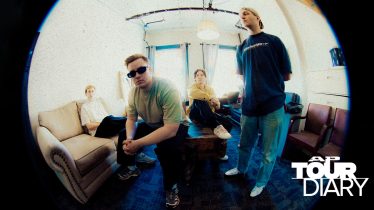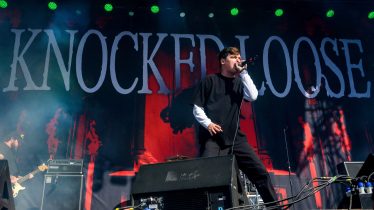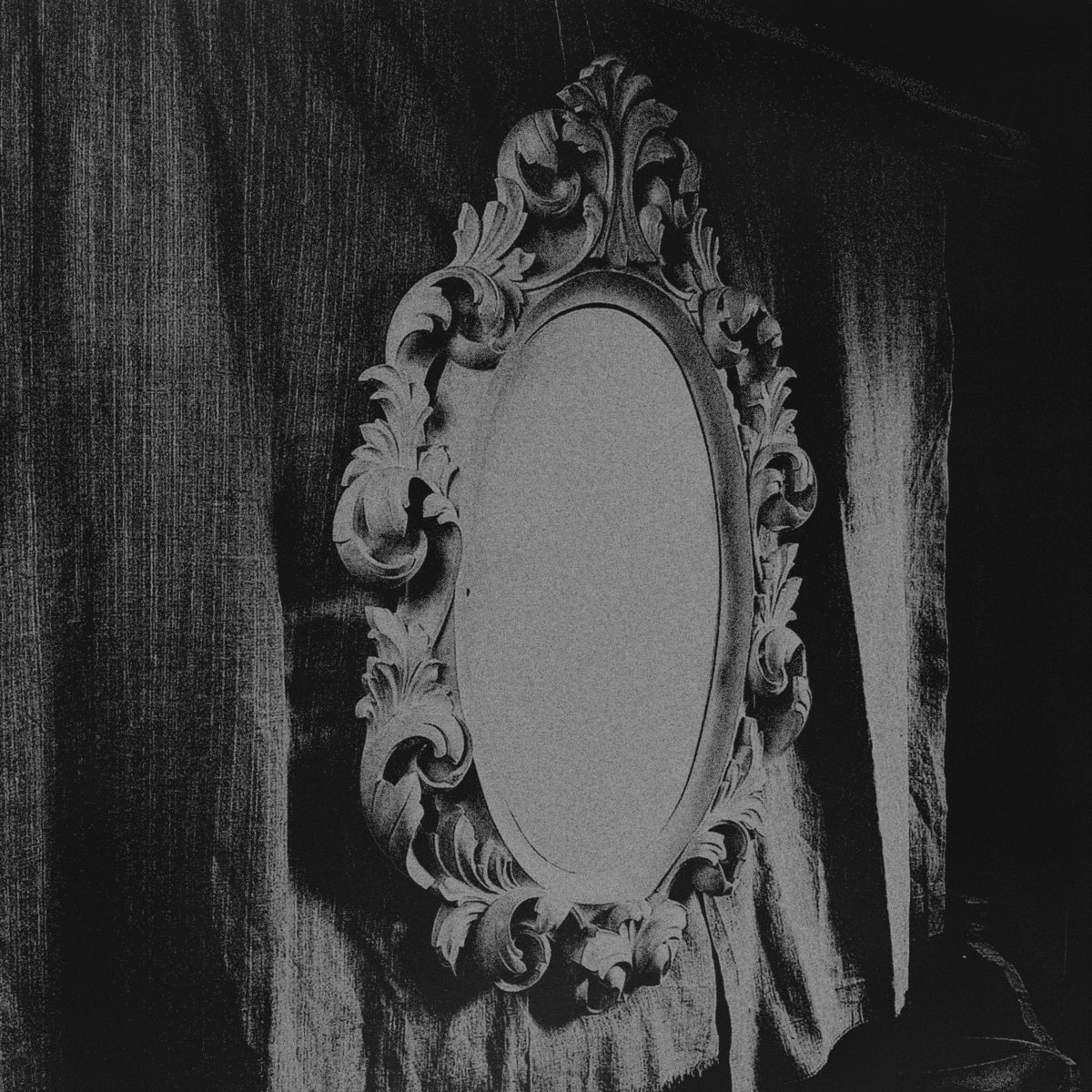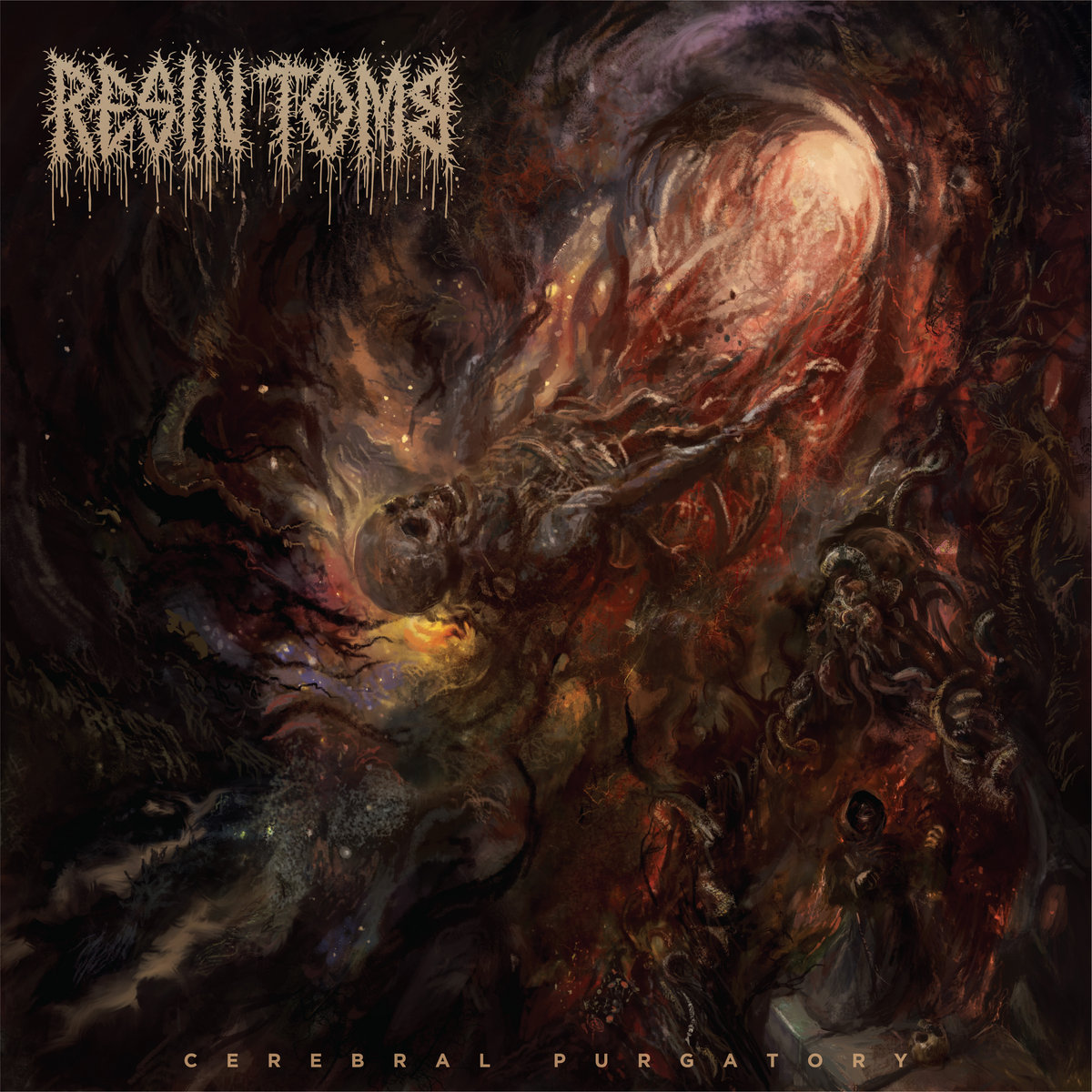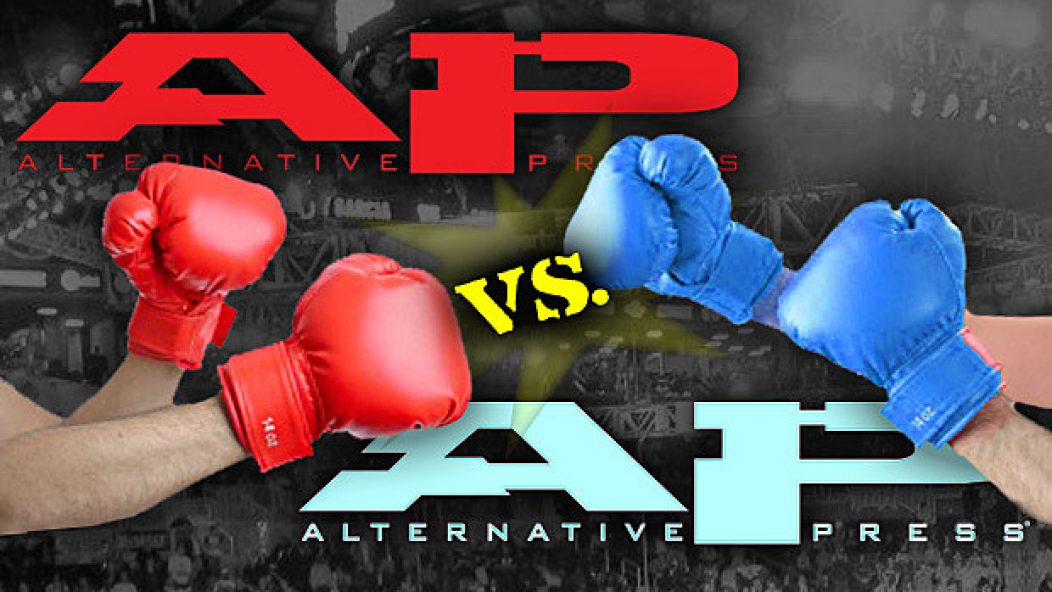
Cage Match: Art VS. Artifice
When a topic becomes too hot for just one person, we turn to the CAGE MATCH. Two AP editors enter—and, well, two AP editors leave, too, because we’re not savages. But this is the virtual arena where our editorial staff can battle out opposing views and see if any sort of compromise can be made.
TOPIC: With the recent internet hubbub over Black Veil Brides performing on Warped Tour with a wall of dummy cabs, we have to ask: Why do people view style and substance as mutually exclusive? Can music and spectacle coexist?
POINT ONE: The false dichotomy of “heart” vs. “theatrics”
CASSIE WHITT, WEB CONTENT MANAGER: In the alternative scene, we have been conditioned to hate “rock stars.” Relatibility is the pinnacle for many when it comes to the way they mentally legitimize an artist.
So when a musician doesn’t look just like a kid who could be living down the street from them, they’re written off as lacking substance and not given a chance. The thought is: “They need all those bells and whistles because they suck at music.” It’s automatically assumed to be a front, and there’s the assumption all the imagery is a commercial mechanism to hike sales (and skirts), rather than a continuation of the band’s larger vision.
Theatrics that make sense and are tied to a musician’s work make for a more interesting band. They create a narrative, a focal point and take music from being, “Man, I just wanna be in a band” to “I want to create a new experience.” I am not referring to arbitrary, extreme wardrobe choices, but to the imagery that surrounds a musician’s work to create an atmosphere and a larger, cohesive piece.
For Black Veil Brides—contrary to what those who write them off because of how they look think—that is the case, as evidenced by their recent art exhibit in Los Angeles with Richard Villa III, the artist who has long collaborated with them to realize the visual aspect of their band.
It is unfair to write off a musician as insincere or illegitimate because they have not constrained what they create to one artistic medium.
SCOTT HEISEL, MANAGING EDITOR: It may be unfair to write a musician off because of their choice of artistic expression, but it’s also commonplace in today’s music-listening landscape simply because for better or for worse, everything has become compartmentalized (some might say “ghettoized”). You like pop-punk? Okay, here are your tie-dyed tank-tops, snapback hats and mesh shorts. Into metalcore? Enjoy a shirt that says “FUCK YOU, WHORE” on it. Most bands in the contemporary punk/rock/emo/metal scene that AP covers purposely color inside the lines to stick within the genre they want to succeed in—and frankly, while I probably should mind that, I don’t, because it creates a nonstop conveyor belt of musical comfort food. Sometimes, you just want to hear an eighth generation New Found Glory clone.
So when bands like Black Veil Brides, 30 Seconds To Mars and My Chemical Romance try to create a spectacle that goes above and beyond “three to six white men onstage playing power chords and jumping up and down,” it ruffles feathers and makes some people uncomfortable—and while I hate to admit it, I’m occasionally one of those people. I’m all for creativity in music, but I’m also of the belief that if you can’t say it in your songs, you probably shouldn’t say it at all. I don’t hate concept albums, but I loathe fantasy worlds created out of said concepts. It’s why I worship Boys Night Out‘s Trainwreck and don’t own a single Coheed And Cambria record.
I think part of why those types of expanded-universe scenarios make people uncomfortable is because it makes people feel like they’re disconnected from what’s going on unless they choose to be the ultimate diehard fan. When I saw My Chem tour as the Black Parade, I remember sitting in the lower bowl of the basketball arena they were playing in and simply not understanding or enjoying the costume changes, the blimp flying above the audience and the elaborate stage design—and I felt this way primarily because while there are some MCR songs I enjoy, I never got into the band with the fervor of many others (yourself included, Cassie). I felt like an incredibly old man wondering “what all the fuss was about”—and I was only 24 at the time.
POINT TWO: The Conveyor of Casual vs. The Fan-Carried Legacy
CASSIE WHITT: Though delving into theatrics and expanding artistically may alienate a large part of a potential audience that just doesn’t want to invest in all of it, it does create a more passionate following, overall, who are more willing to, say, actually support their favorite band monetarily.
I agree that it’s easy to feel outcast by something elaborate. Coheed And Cambria are a perfect example for me, as well. I feel like I can follow them casually, but I’m not ready to pick up that $40 hardback trade edition of The Amory Wars just yet. Though I was more than willing to drive two hours to pick up an alternate cover of the first issue in the Killjoys series.
But that difference still starts with the music. I started with a love for MCR’s Three Cheers For Sweet Revenge that compelled me to research and become totally immersed in the movement and environments the band created throughout their career. It didn’t have to escalate. With theatrical bands, it can also end with the music—unless the artist is absolutely overbearing in their external expressions and completely drives listeners away.
I think a band that creates a career narrative that is compelling enough for fans to become a part of will always find more success and create a more visible legacy than those who do not, because the fans live it, breathe it and will carry it on. I can listen to a hundred bands croon about breakups and things that are more grounded in reality, and download the songs I care about, but that’s still someone else’s story, not mine, and there’s not that extra compelling element that makes me want to be a part of the story when a musician is presented as just another regular lady or dude writing about ordinary things. I think their fans, though passionate, will reflect how casual they are, and it will remain fleeting, and maybe that’s the special part about that kind of conveyor casual listener and musician dynamic.
That’s almost more alienating to me. There’s no right or wrong way to appreciate music, but for many it’s something therapeutic. And that can apply to both sides of this argument. Someone in love with a slew of the Starting Line (whom I also love, mind you) clones are probably looking for something they see themselves in. Someone who indulges thoroughly in a band like Black Veil Brides may be looking for something that appeals to their escapism and takes them away from their reality.
SCOTT HEISEL: I think part of my unwillingness to appreciate these sorts of elaborate, larger-than-life characters that some bands create stems from my own personal period of music discovery. My most important years were between 1994 and 1998, when I discovered (and then dove headfirst into) punk and emo. One of the first things I realized about those scenes was that by and large, it wasn’t about trying to be grandiose. It was about being honest, heartfelt (almost to a fault) and relatable, in the way that says to the average listener, “Hey, I could do this, too!”
I started bands in direct response to becoming immersed in those cultures, as well as contributed to zines, booked shows, worked at a record store, etc.—to me, all appropriate, achievable goals. If you would’ve asked me to create a fictional narrative for an album or even just sketch out character ideas, I would’ve been baffled—that’s not something I would have excelled in, so I would have had no desire for it.
That’s not to say that the music I listened to in the ’90s is any more “real” than, say, the Killjoys and their battles in the desert (I mean, one of my favorite bands ever is Jimmy Eat World, and Jim Adkins has told me in multiple interviews that he writes from a fictionalized perspective), but I still have a harder time enjoying elaborately conceived ideas. To me, music should be all about spontaneity, and I feel like you lose that with theatricality.
But here’s my main point: How many of these bands would be any good without the costumes, the storylines, the gimmick? Would people still care about Blood On The Dance Floor if Dahvie Vanity and Jayy Von Monroe looked like Chuck Ragan and Chris Wollard from Hot Water Music? My feeling is this: Whatever it is you’re doing visually onstage, your songs better be able to stand on their own if I close my eyes. And for a lot of these bands, that is just plain not the case.
POINT THREE: What is art? What is gimmick?
CASSIE WHITT: Your experience from that era is similar to that of many others, I would imagine, and perhaps the part of it that creates a disconnect for me is that I am a woman. Seeing a predominantly male community doing something accessible for men doesn’t necessarily evoke the same feelings for me as a girl. Where you felt you could be a part of the music world by being like those guys, I think I found an entry point in the hyper-masculine scene when I saw the artists who put on a show, challenged gender expression and opened their music up to something larger. It’s easier to relate to that than to the boys who wouldn’t talk to me in high school.
As to your last point, there are some things that can’t fall under the umbrella of the “music, expanded” idea I’m defending. When the image, or the “gimmick” becomes disconnected from the music, it’s no longer an extension of the work; when something is conceived merely to sell a T-shirt, it’s no longer a daring piece of art that’s challenging or expanding anything. When your band is no longer controlling the message but just selling something, it’s dishonest, and that is just the sort of thing that people will see through, and it won’t have that same power to live on. If you can show me a shtick and thoroughly explain the concept behind it, great. But, if you’re arbitrarily throwing me into sensory overload because it’s all you can do to get people to pay attention to you, I want no part of it.
Music should be able to stand alone, yes, but it only hurts to withhold a vision if one exists. If one doesn’t exist, it shouldn’t be forced.
—
SCOTT HEISEL: You bring up a good point, and one that I hadn’t considered before this: Someone’s gender could definitely have an effect on how he or she experiences art. But I’m sure there are plenty of men who look and act like me who would also love to watch Motionless In White apply their elaborate stage makeup, just as there are likely hordes of women similar to you who couldn’t care less about watching Gerard Way wildly over-exaggerate his facial movements onstage for the benefit of those in the cheap seats.
Regarding merch: I would argue that any band immediately removes themselves from the “high art” discussion the second they slap their logo on a T-shirt. It immediately commodifies whatever it is that’s your driving artistic force, so even though Trent Reznor is known for putting on an absolutely incredible live show from an audio-visual standpoint, I would never consider it as on the level as seeing the Cleveland Orchestra, even though I might take more artistic appreciation from the former than the latter. Scratch that; I definitely would take more artistic appreciation from the former.
At the end of the day, I have to realize just because I don’t like something doesn’t invalidate it as art, and who am I to scoff at a band’s choice on how to present themselves? Like Andy Biersack said on Twitter earlier this week after everyone flipped out over Black Veil Brides using empty cabs onstage to help add to their rock ‘n’ roll persona, “It’s staging, meant to enhance the stage show.” (Major props to them playing with the dummy cabs reversed the other day, proving to any naysayers on Warped Tour that they can bring it regardless.)
Case in point: As I mentioned earlier, my biggest growth years musically were between 1994 and 1998, and they were kicked off directly because of Green Day’s Dookie. That record inspired me and made me realize that rock ‘n’ roll is not something created in a boardroom but a basement, and if those guys could do it, then anyone could. Flash forward to this past March, when my wife took me to see American Idiot the musical on my birthday. I enjoyed it but left feeling conflicted, because the previous 90 minutes completely wiped away what I had defined Green Day’s art as being so many years ago. But I guess that is truly the point of art: to make you think. alt

